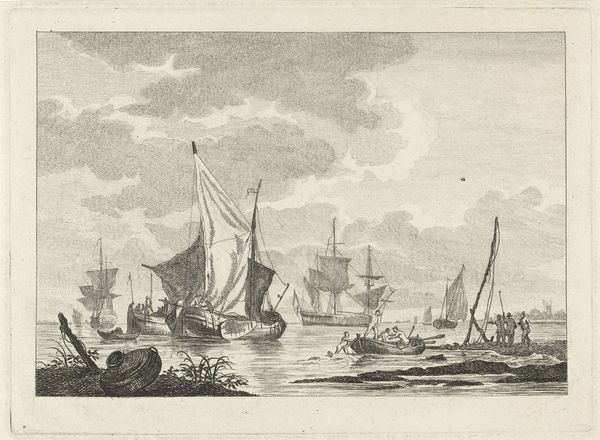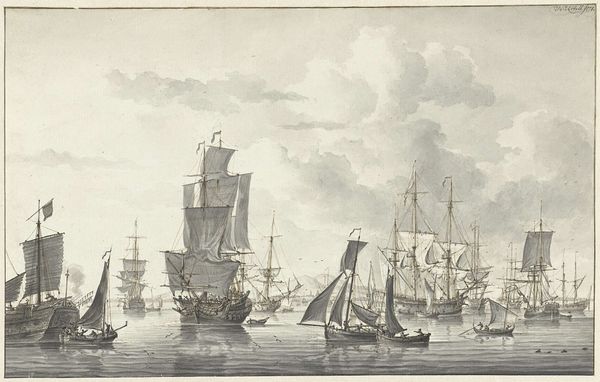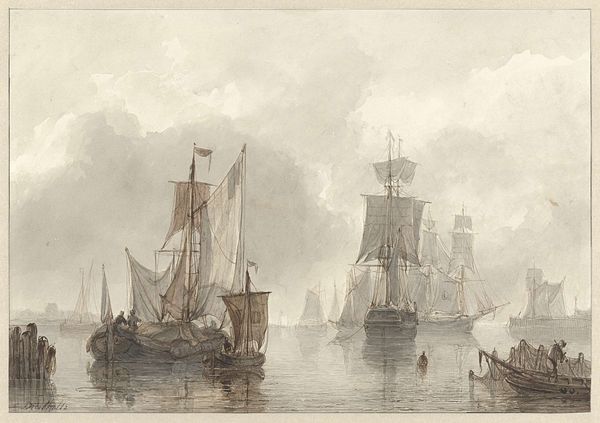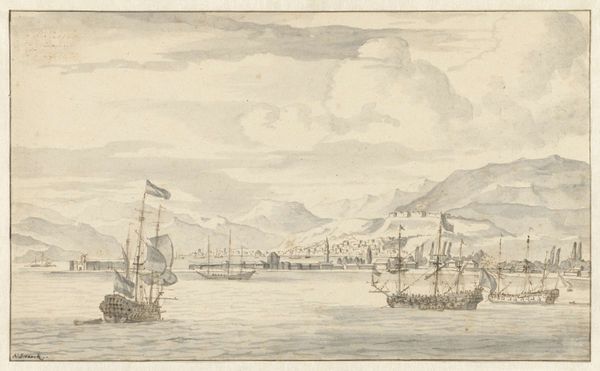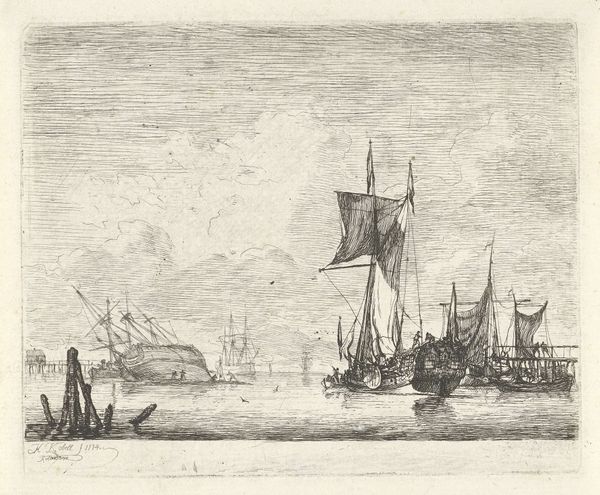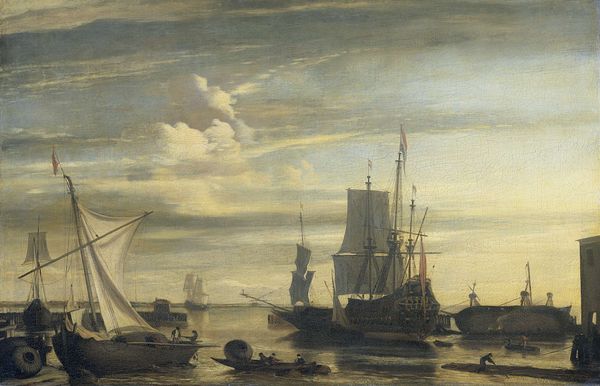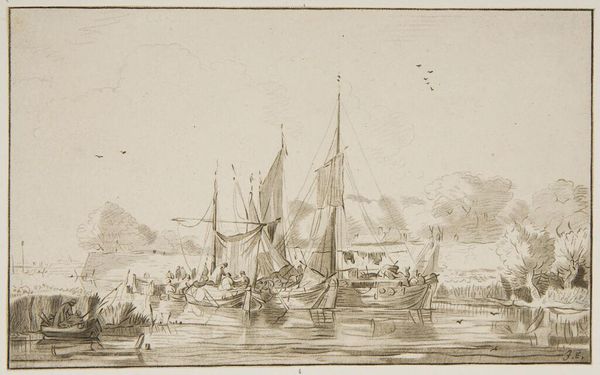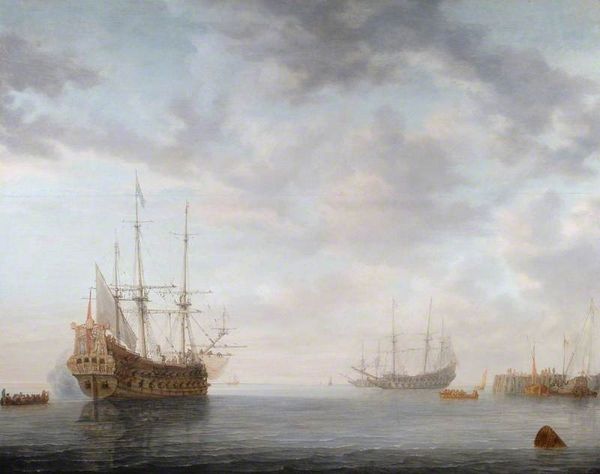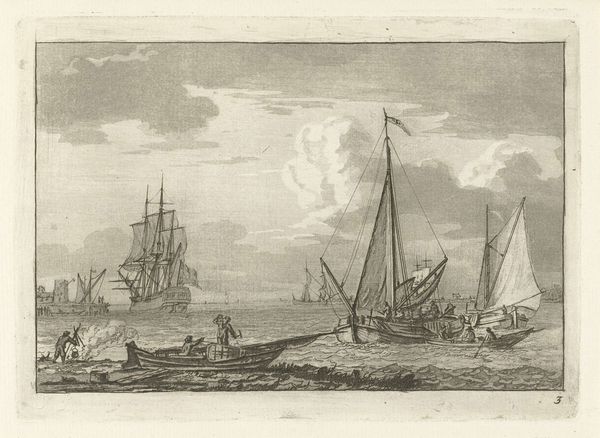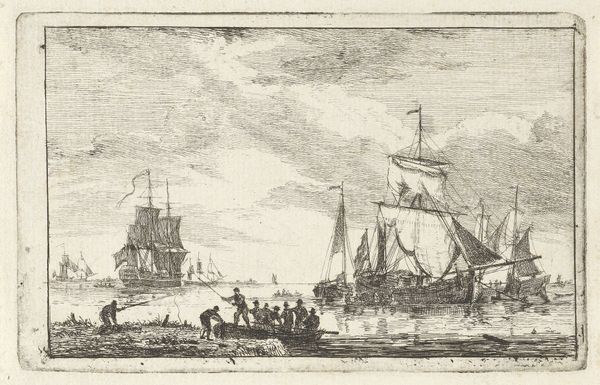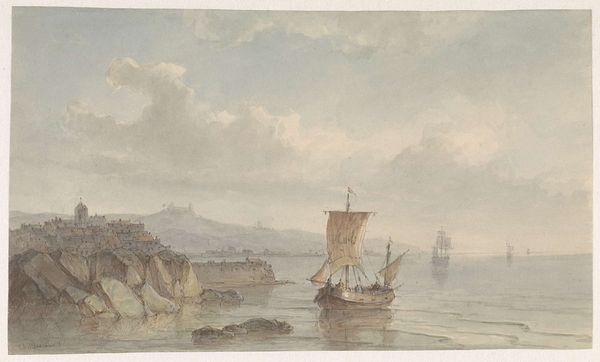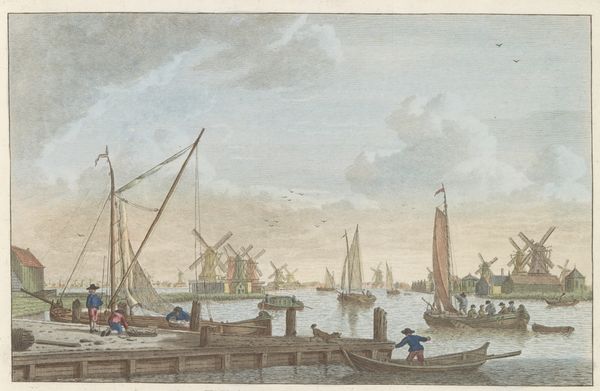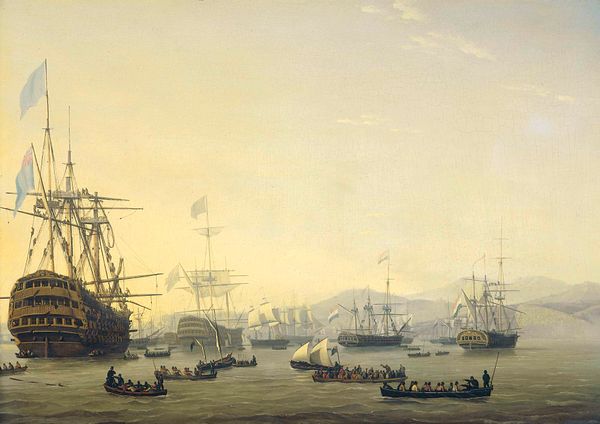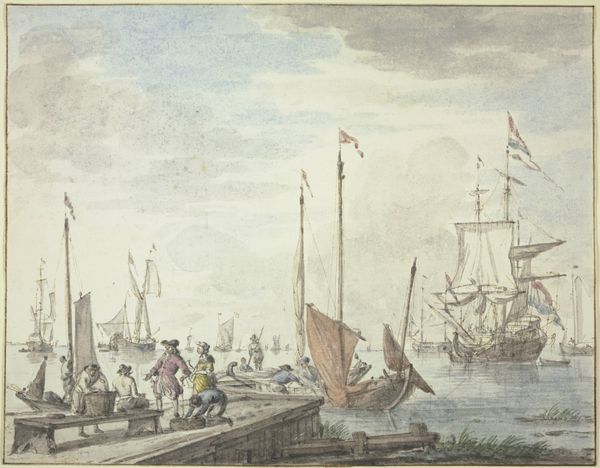
painting, oil-paint
#
venetian-painting
#
baroque
#
painting
#
oil-paint
#
landscape
#
cityscape
#
mixed medium
#
mixed media
#
watercolor
Dimensions: height 20 cm, width 50.7 cm, depth 4.1 cm
Copyright: Rijks Museum: Open Domain
Editor: This is Caspar van Wittel’s, “View of the Gulf of Naples,” made sometime between 1675 and 1750, using oil paints. There's something very calm about the scene; all these ships floating in the bay, it's lovely. How do you see this painting? Curator: Well, first, I see layers of materiality and labor. Look at the pigment itself, the oil; where did that come from? The ships suggest a reliance on imported raw materials like wood, textiles for the sails. Who built those ships? Whose labor was required to obtain and then transform those raw materials into something that travels and trades? Editor: So you are focusing on the processes involved in making a painting and the maritime technologies presented. Are you suggesting we also need to know who financed these trades to really understand this painting? Curator: Exactly! Venetian painting during this period relied heavily on international trade and the exploitation of resources. Think of the pigments themselves – ultramarine, for example. Its source, lapis lazuli, was mined and traded across vast distances. Even the simple act of representing this scene, the application of paint to canvas, reflects a complex web of global interactions. Do you see that labour represented in the figures in the lower corners of the painting? What purpose do they have? Editor: Yes, now I see the figures hauling and carrying goods. It highlights the economic activity inherent in this cityscape. It also brings attention to the fact that most of the people's labor goes unrecorded and unrecognized! I will have to remember that context shapes both the subject of art, and the making of art. Curator: Precisely! Looking beyond the aesthetic surface forces us to reckon with production, extraction and exploitation tied into art. Editor: Definitely. Next time, I'll remember to investigate all the raw materials needed, and whose labor created a piece of art. Thanks for opening my eyes!
Comments
No comments
Be the first to comment and join the conversation on the ultimate creative platform.
